This document provides information about St Mary College of Pharmacy and summarizes the key points about the drug Bromocriptine. It discusses Bromocriptine's indications for treating hyperprolactinemia, acromegaly, Parkinson's disease, and type 2 diabetes. The document also covers Bromocriptine's pharmacokinetics, pharmacodynamics, mechanisms of action, efficacy, adverse drug reactions, drug interactions, and special populations. It provides details on Bromocriptine's brand names, chemical structure, and metabolism by CYP3A4 enzymes.
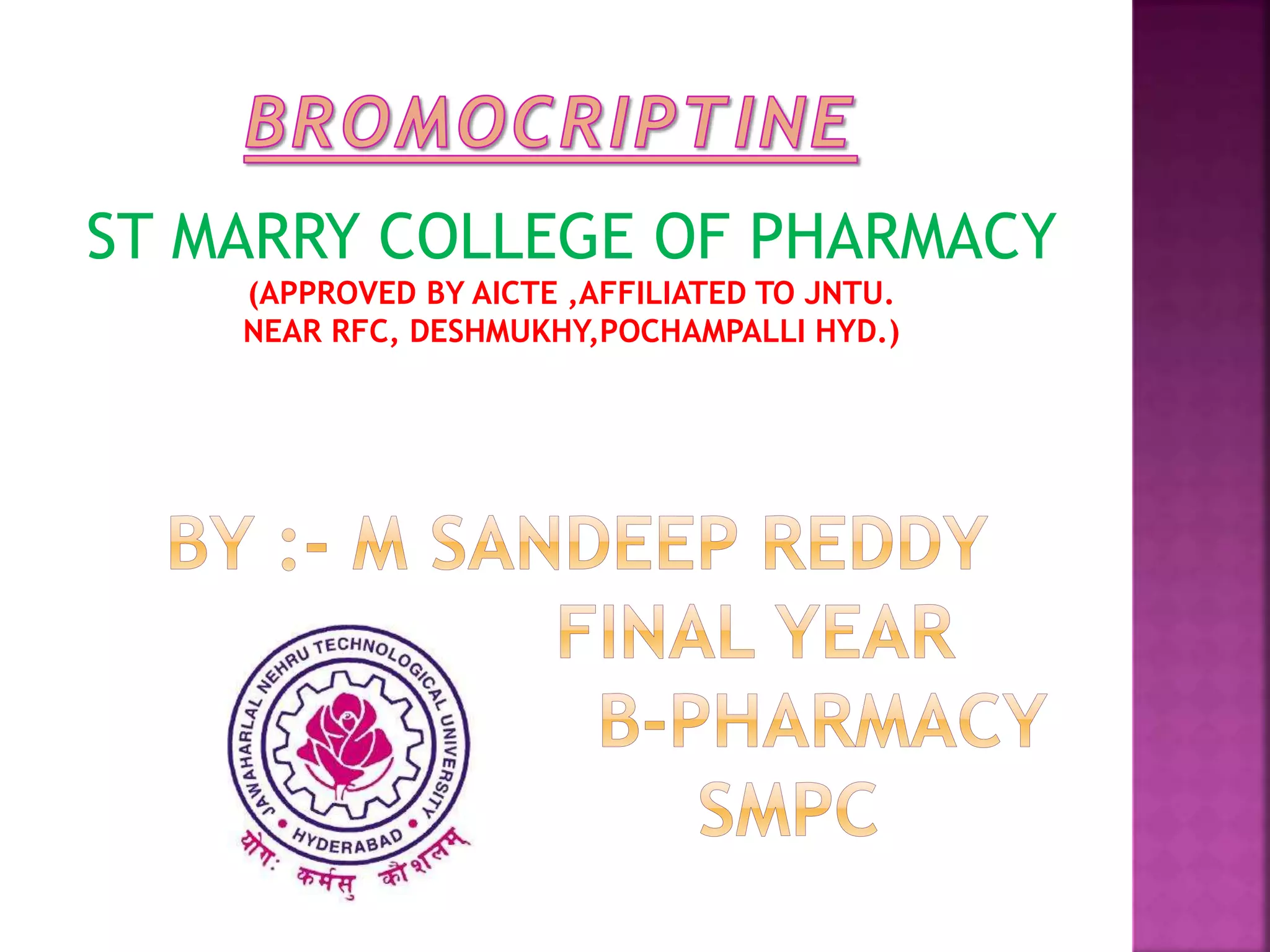


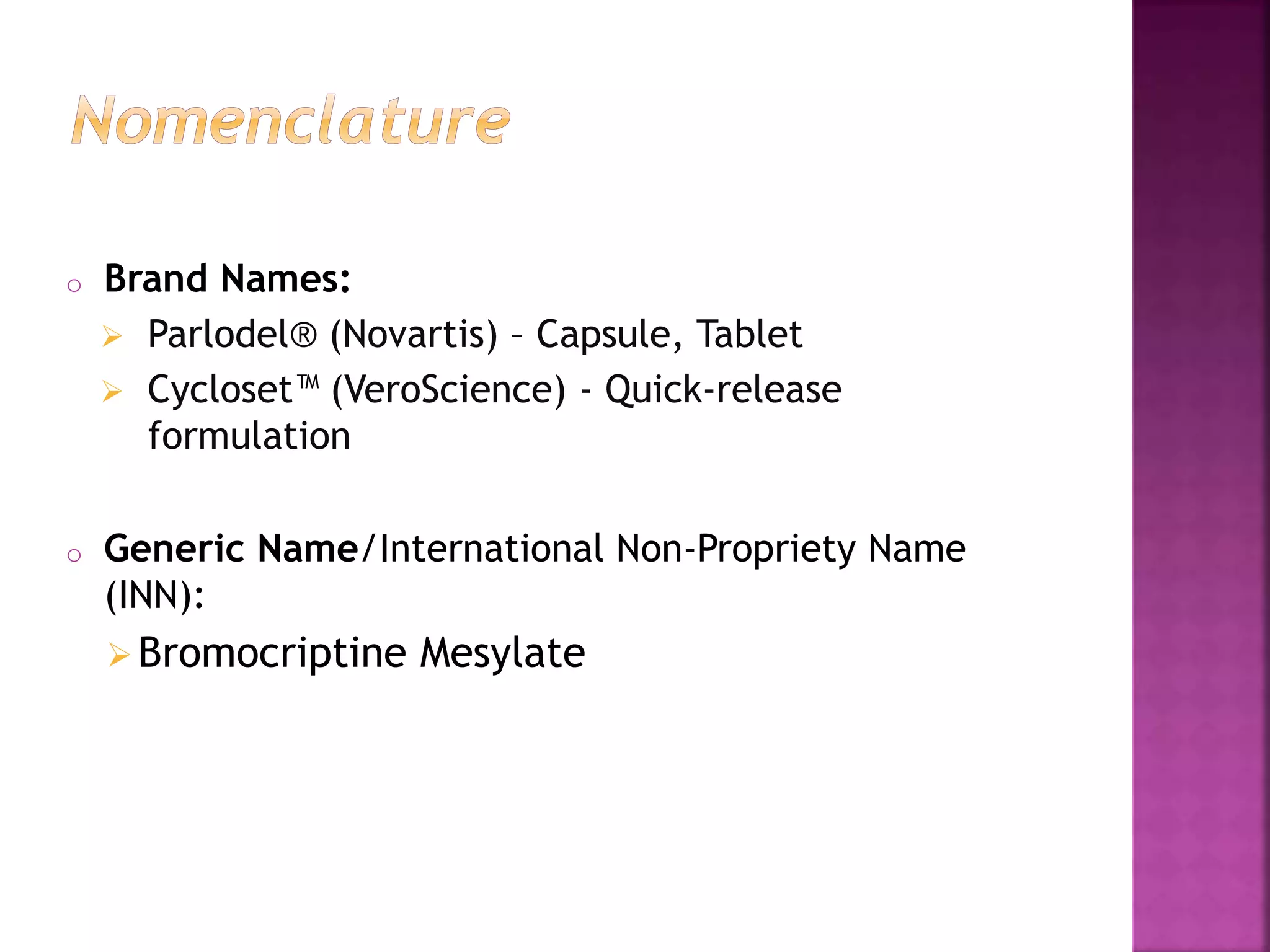
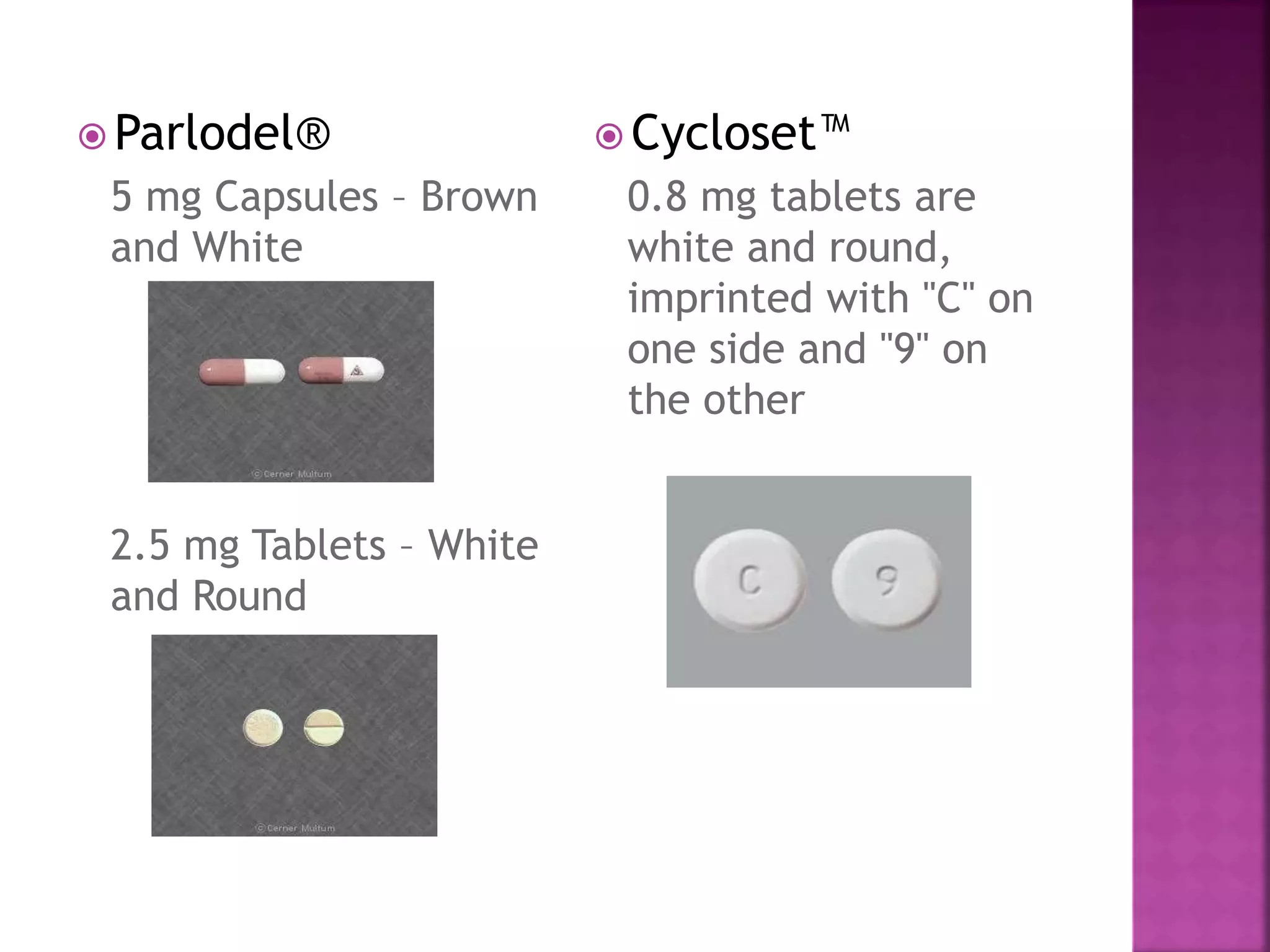














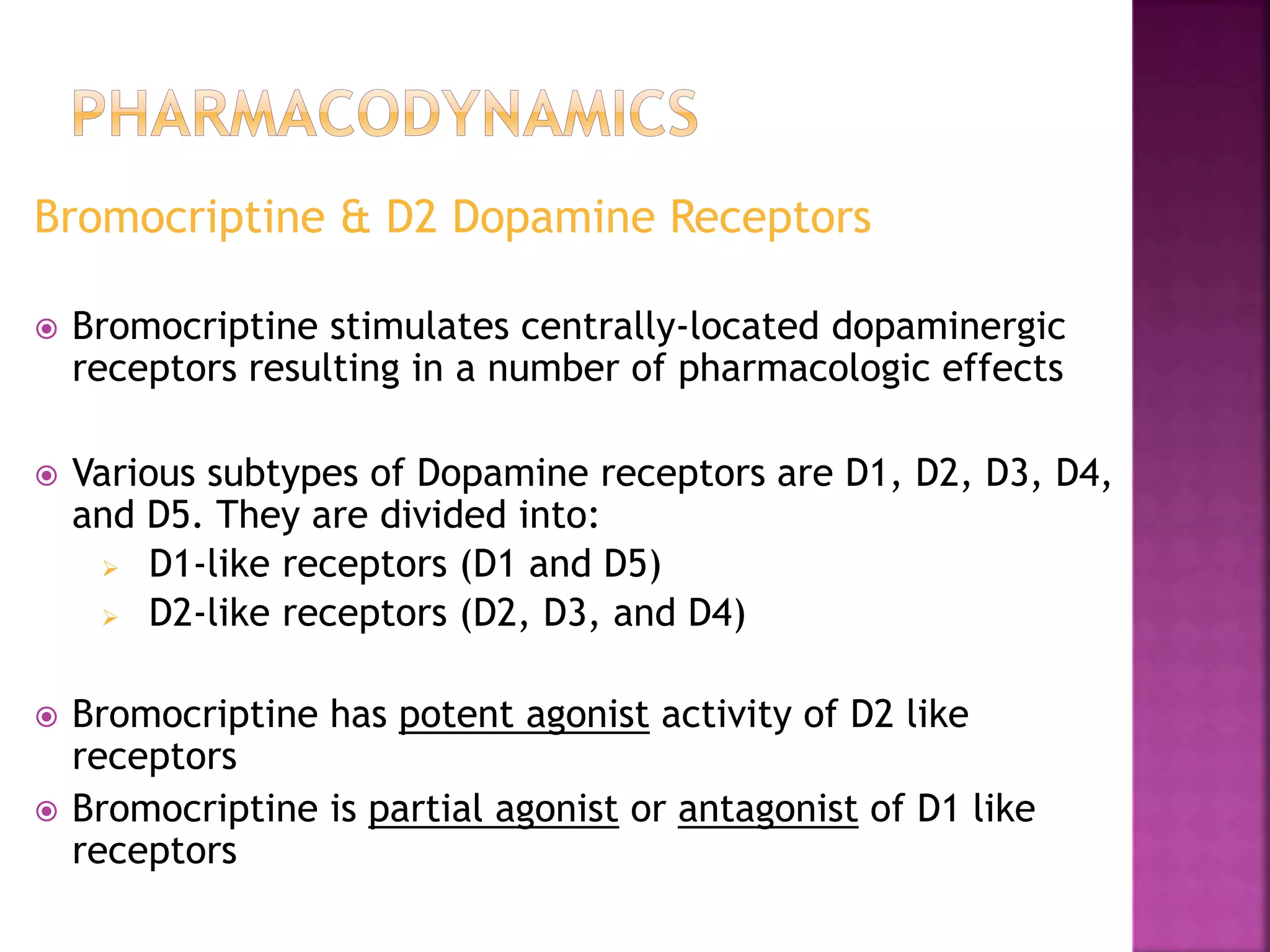

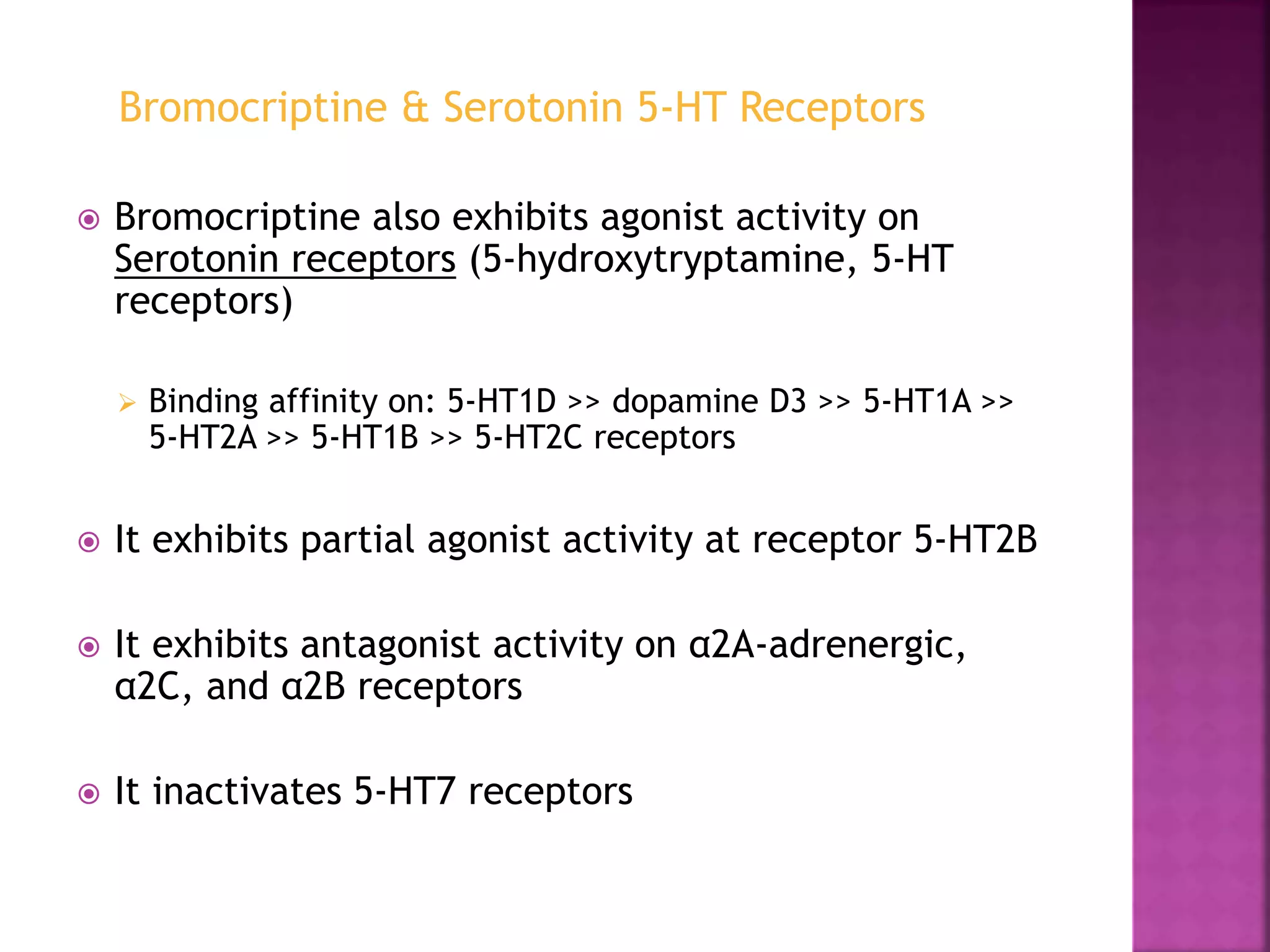
















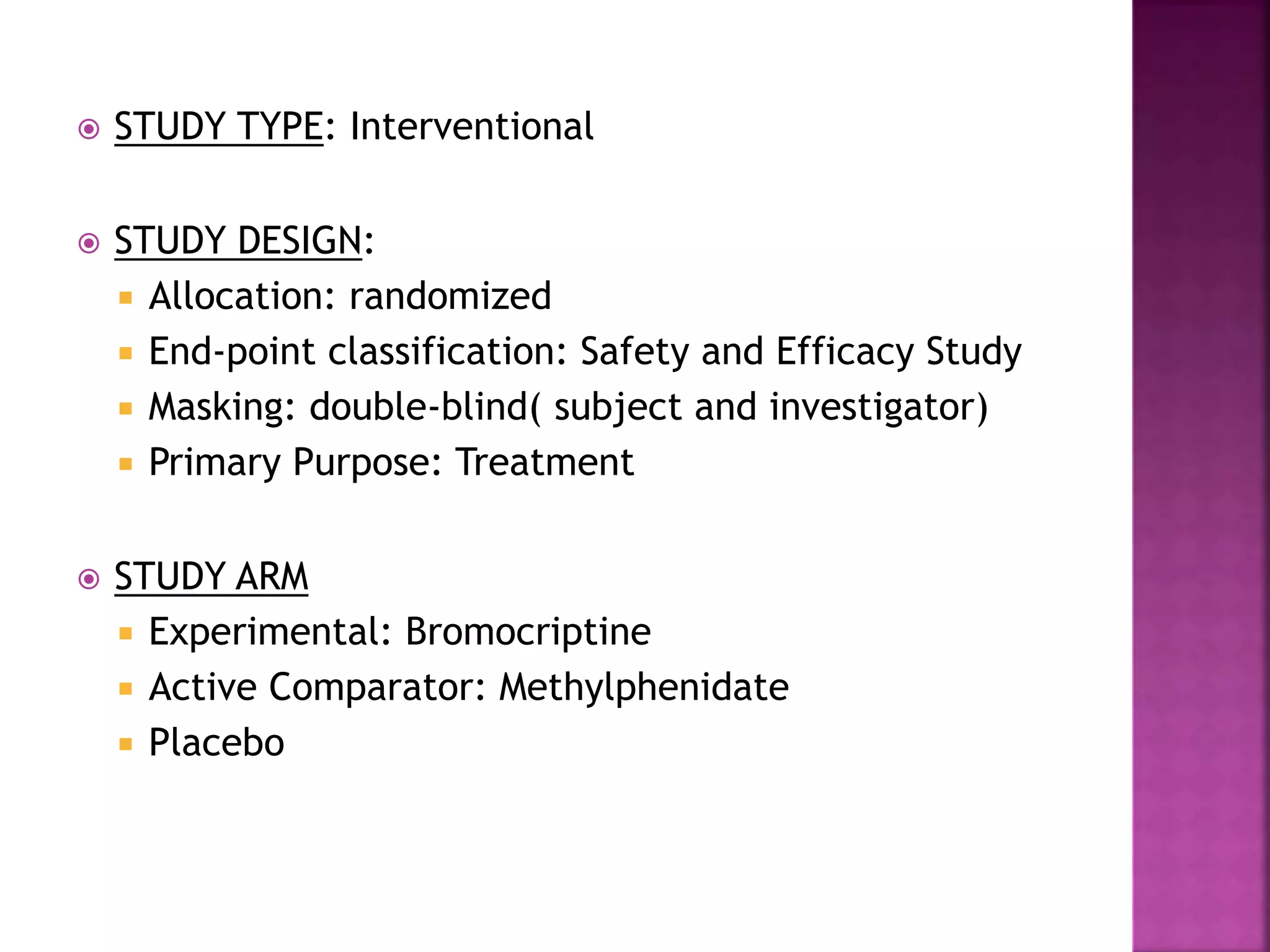
![ PRIMARY OUTCOME MEASURES:
Mean Change From Baseline in the Adult Attention
Deficit Hyperactivity Disorder Investigator Symptom
Rating Scale (AISRS)
Total Score After 4 Weeks of Treatment [Time Frame:
after 4 weeks of treatment ] [ Designated as safety
issue: No]
SECONDARY OUTCOME MEASURE:
Mean Change From Baseline in the AISRS Inattentive
Subscale Score After 4 Weeks of Treatment [ Time
Frame: after 4 weeks of treatment ] [ Designated as
safety issue: No ]](https://image.slidesharecdn.com/bromocriptine-130412172318-phpapp02-170302050855/75/Bromocriptine-130412172318-phpapp02-40-2048.jpg)




